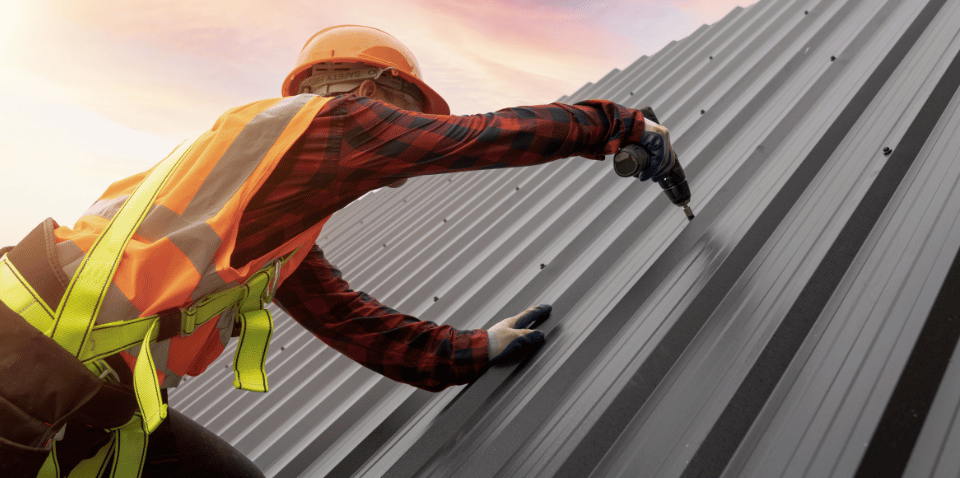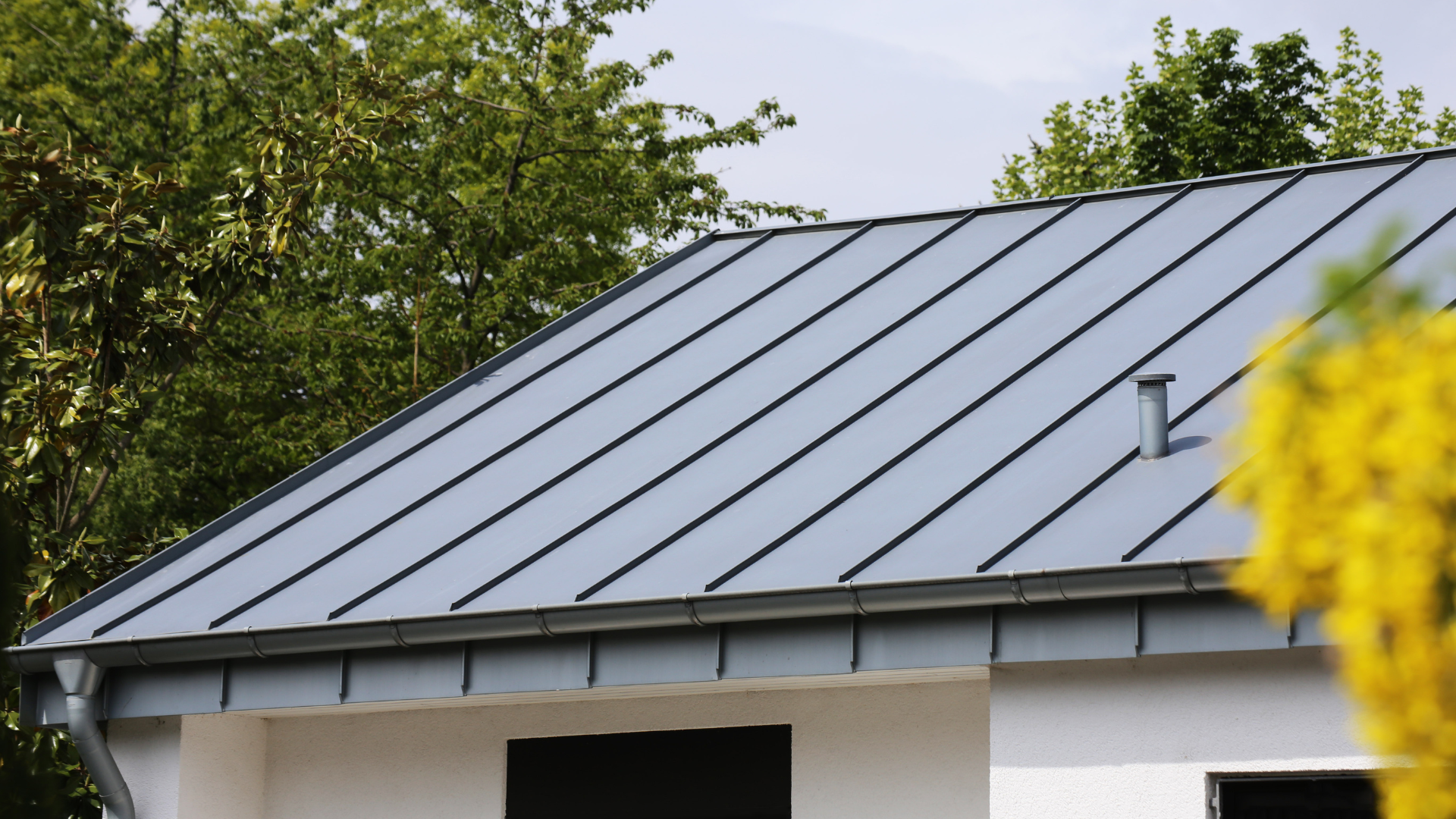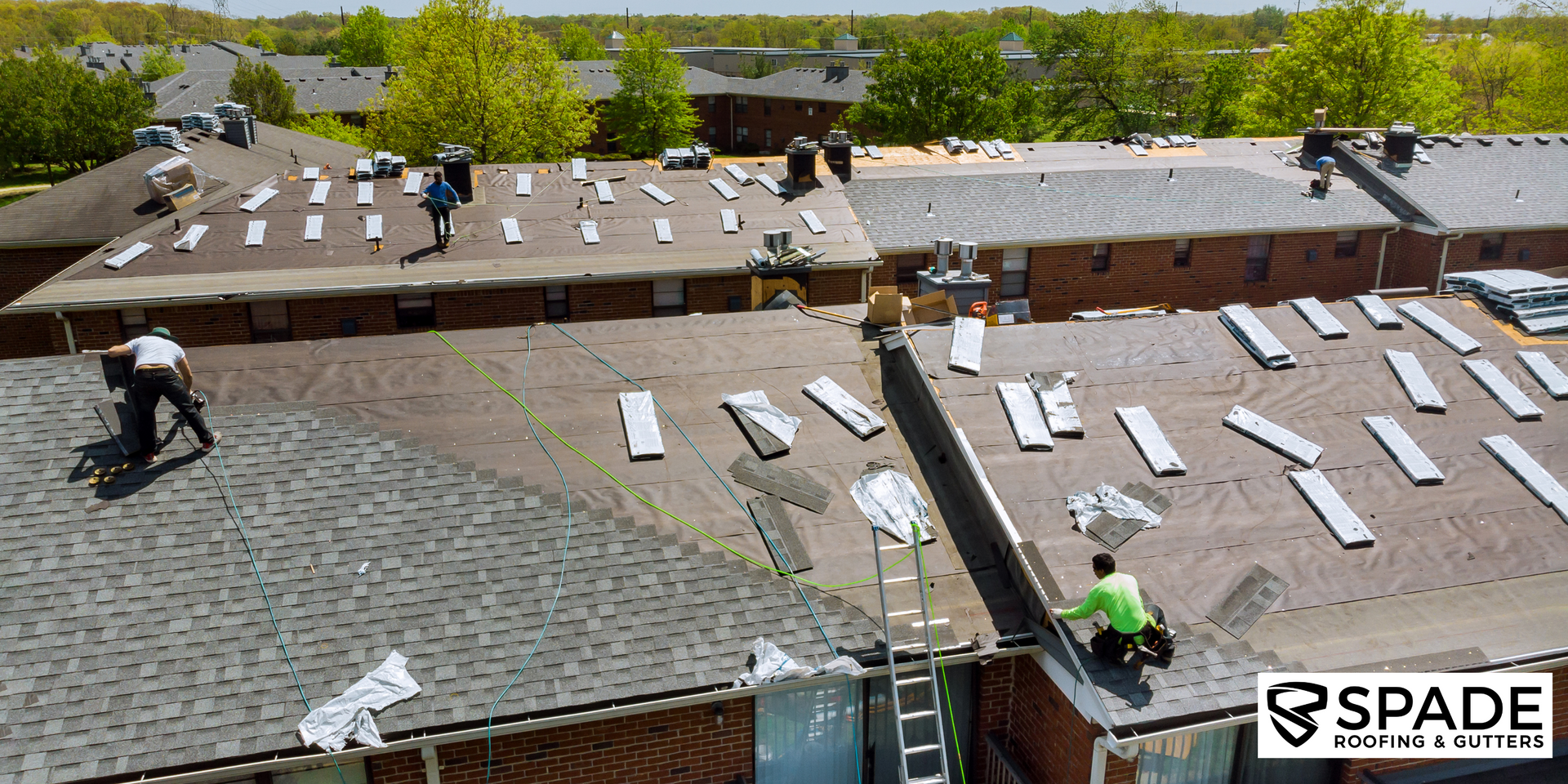SCHEDULE AN APPOINTMENT! (512) 237-8620

What is the Biggest Problem with Metal Roofs?
Metal roofs are known for their durability, but they have drawbacks. What is the biggest problem with metal roofs? Leaks, often caused by seams and faulty flashing, can be a significant concern. This article examines leaks and other issues like rust, noise, and thermal expansion.
Key Takeaways
- Leaks in metal roofs often stem from improper installation and maintenance, especially at seams and flashings. Regular inspections and high-quality sealants can help prevent this issue.
- Rust and corrosion can significantly shorten the lifespan of metal roofs, particularly in humid and coastal areas. Choosing rust-resistant materials and maintaining cleanliness are essential.
- Noise can be a concern with metal roofs, but using proper insulation and underlayment can greatly reduce sound transmission, enhancing comfort in your home.
What are Metal Roofs and How Do They Compare to Traditional Roofing Materials?
Metal roofs are a type of roofing material made from metal panels or shingles, designed to provide a durable and long-lasting solution for homeowners. Compared to traditional roofing materials like asphalt shingles, metal roofs offer several advantages. They are more resistant to weathering, can withstand extreme temperatures, and are less prone to damage from heavy snow or hail. Additionally, metal roofs are often made from recycled materials and are 100% recyclable at the end of their life, making them a more sustainable option.
In terms of durability, metal roofs can last anywhere from 40 to 80 years, significantly longer than the 20-year lifespan of typical asphalt shingle roofs. They are also more resistant to impact, including hail, and offer superior resistance to wildfires. However, metal roofs can be noisier during rain or hailstorms and may require additional insulation to reduce noise levels.
Metal Roof Leaks: Causes and Prevention
Leaks in metal roofs can be highly troublesome and are often attributed to issues at the seams and overlaps, where water has the potential to penetrate through capillary action or as materials wear down. The situation is worsened when substandard sealants are used that don’t bond effectively with metal surfaces. To avert such leaks, it’s crucial to employ high-grade, compatible sealants and maintain them diligently since they typically have a shorter lifespan than the actual roofing material.
Faulty attachment of flashings constitutes another frequent source of metal roof leaks. These components play an essential role in channeling water away from areas prone to leakage around HVAC systems and other penetrations on the roof surface. If these elements aren’t installed properly, moisture can seep in over time, causing extensive damage.
Adverse weather conditions like UV exposure and temperature shifts may also threaten your rooftop’s structural soundness. Hence secure flashing attachments maintained regularly are indispensable for leak prevention.
The selection process for metal roofing panels should be approached with care alongside assurance of their correct installation—it’s critical because even minor errors during installments such as improperly secured screws might compromise watertight integrity leading to future leaks. Employing a reputable contractor known for quality workmanship helps minimize this risk significantly while routine inspections coupled with consistent upkeep serve pivotal roles in staving off leaks thus prolonging your metal roof’s longevity.
Addressing Rust & Corrosion in Metal Roofs
Rust and decay pose major challenges for metal roofs, particularly in regions near the ocean where airborne salt enhances electrical conductivity and accelerates degradation. When humidity soars above 90%, there’s a heightened risk of intense corrosion effects known as blistering, underscoring the need for frequent upkeep. For homeowners looking to counteract these threats, choosing galvanized steel or similar rust-resistant options is advisable.
Fading occurs when the pigment of the paint applied to the metal substrate breaks down due to environmental factors like UV rays and pollution, leading to uneven discoloration and potential corrosion.
When different metals are exposed to moisture together, they may experience galvanic corrosion—the process by which the more reactive (less noble) metal deteriorates faster. This kind of deterioration often manifests around fasteners or with other metallic elements that might differ from the primary material used in construction. To stave off this issue on metal roofs, one should employ specialized fasteners compatible with those surfaces while avoiding combinations of disparate metals.
Spaces prone to trapping water such as crevices formed around fasteners or beneath debris collected on a roof’s metallic expanse can be hotspots for what is termed ‘crevice’ corrosion. Regularly cleaning these areas and performing routine maintenance acts as a preventative measure against such issues. Applying protective coatings along with employing tension-leveled metals offers additional defense against filiform corrosion—a condition characterized by thread-like patterns developing under paint layers amidst high-moisture environments.
Employing an experienced contractor who understands these specific complications associated with maintaining a metal roof is crucial—such expertise can dramatically improve your roof’s durability over time.
Noise Issues with Metal Roofs
One of the most common complaints about metal roofs is noise. Their hard, rigid structure can amplify sounds from rain, hail, or falling debris, making metal roofs louder than other roofing materials. This is particularly noticeable in areas like Austin, where thunderstorms can be quite intense. Unlike traditional roofing materials that absorb sound, metal roofs reflect it, contributing to the overall noise level.
However, there are ways to mitigate this issue. Using a roofing underlayment can significantly reduce noise by acting as a barrier between the metal sheeting and the home.
Additionally, installing insulation in the attic or using foam gap fillers can help dampen the sound. A solid sheathing or insulation layer beneath the metal roof can further minimize noise transmission. The shape of the metal roof also plays a role in noise levels. Flatter designs tend to vibrate less and produce less noise. Adding a finished drywall ceiling can further reduce noise transmission from the metal roof into the home. Proper installation techniques minimize noise, highlighting the need for skilled professionals.
Thermal Expansion and Contraction
Temperature changes naturally cause contraction metal roofs to experience expansion when heated and contraction as they cool. This continual cycle of movement may result in the separation of seams and additional structural problems over time.
The regular process by which seals, flashings, and other roof parts are worn down involves repeated thermal expansions and contractions. To alleviate the temperature-induced stress that aggravates these conditions, reflective coatings on the roof can be applied. By reducing impact from temperature change-related expansion and contraction through proper insulation, the longevity of metal roofs is significantly improved.
In expansive metal roofing systems, it’s crucial to integrate expansion joints to manage thermal activity effectively and lessen tension on the panels. Proactive inspections aid in early detection of issues related to thermal movements. Thus enabling prompt corrective measures for repair and upkeep. Constructing a roof with provisions designed for managing this thermally induced motion will help avoid many potential complications.
The Problem of Loose or Missing Fasteners
Metal roofs often experience issues with fasteners that become loose or go missing, which is usually due to the roof’s thermal movement and changes in the underlying materials. Such loosening of fasteners can endanger the metal roof’s integrity by permitting water leaks and raising susceptibility to wind uplift, possibly culminating in detachment of the roofing material. These risks are notably acute under harsh weather conditions, as experienced in places like Travis County.
Ensuring that fasteners are properly secured during initial installation greatly reduces their chances of coming undone later on. Routine inspections play a critical role in pinpointing problems with these components early on before they lead to moisture entering through openings.
Neglecting such maintenance concerns could prompt far more severe damage over time, leading inevitably to an increase in repair expenses. Promptly addressing any incidents involving loose or absent fasteners is key for maintaining both performance and long-term durability of your metal roof.
Oil Canning: What It Is and How to Prevent It
The term oil canning is used to describe the appearance of undulating waves across metal panels, often noticeable in expansive, flat sections. This issue is aesthetic and does not affect the roof’s structural stability. It can be a significant visual distraction. It usually arises from applying excessive stress to the metal during its installation.
To decrease the chances of oil canning manifesting visibly, using narrower panel widths is beneficial as they have less extensive flat surfaces that could show waviness. Employing low-gloss or matte finishes on metal roofs may also make oil canning less apparent. Ensuring that panels are applied over an even roofing deck and selecting tension-leveled metals are effective ways to Curtail this effect.
Incorporating shimming materials or backer rods has been shown to counterbalance irregularities in roof panels which contributes significantly towards reducing signs of oil canning. The severity with which these wavy distortions present themselves might vary due to elements such as paint color and finish or through different observation angles. To achieve optimal results while mitigating risks associated with oil canning, homeowners should engage with their roofing contractors for expert advice on appropriate material selections and refined installation methods tailored specifically against this phenomenon.
Denting and Impact Damage
Denting metal roofs may sustain damage and dents due to various external forces, including hailstorms, the impact from branches, or contact with substantial debris. Such incidents can impair their functionality. To reduce the likelihood of denting in metal roofing systems, employing materials resistant to impacts or putting up protective measures is advisable. This is particularly important for areas prone to extreme weather conditions like Travis County.
Immediate attention and repair of any indentations or harm are essential for preserving the integrity of metal roofing structures. Dents have the potential to weaken the underlying metal substrate which can lead to deformation in metal roofs as well as cause fractures in paint resin. This exposes them even more susceptibly to rusting and corrosion processes.
Routine maintenance coupled with periodic inspections play a vital role in early detection and remediation of damages caused by impacts on your roof made out of metals such as aluminum thus ensuring its durability over time.
Metal Roofs Energy Efficient Concerns
Insufficient insulation in metal roofs results in energy loss, reduced comfort, and increased utility bills. Proper insulation helps reduce heat transfer, leading to lower energy consumption and utility costs. The effectiveness of metal roof insulation is indicated by its R-value, with higher values providing better thermal resistance.
Metal roofs can reflect heat, but without insulation, they may still absorb heat, increasing interior temperatures. Insulating metal roofs contributes to environmental sustainability by reducing energy consumption and greenhouse gas emissions. The energy cost savings potential of metal roofs is around 40%, making them an energy efficient choice for homeowners.
In Austin, Texas, proper insulation is particularly important due to the hot climate. Properly insulated metal roofs can keep homes cooler in the summer and warmer in the winter, providing year-round comfort and energy savings.
Installation Errors and Their Consequences
Errors in the installation of metal roofs, such as fasteners being driven too tightly or not enough, can result in openings that allow water to penetrate and cause leaks. Incorrect techniques like over-tightening or improperly angling fasteners during installation can lead to oil canning. Such mistakes may culminate in a complete roof failure which necessitates expensive repairs and ongoing maintenance.
Mistakes commonly made during the setup of metal roofing systems include overlooking essential components, installing screws loosely, and failing to secure flashing adequately. These issues typically arise from inadequate installation practices leading to a decrease in the roof’s expected service life. To prevent these complications, it is crucial to engage a skilled and experienced installer who will ensure the proper execution of the job.
The process for installing a metal roof must involve meticulous attention paid to details while strictly following guidelines provided by manufacturers. By conducting routine inspections coupled with necessary upkeep work on your roofing system early detection becomes possible—allowing for prompt correction of any errors present within the installation thus safeguarding against significant damage thereby prolonging your metal roof’s durability.
Choosing the Right Materials for Your Metal Roof
When it comes to choosing the right materials for your metal roof, there are several options to consider. Aluminum, steel, copper, and zinc are popular choices, each with their own unique benefits and drawbacks. Aluminum is highly resistant to corrosion in coastal environments and is lightweight, making it an ideal choice for homes in these areas. Steel offers high strength and is typically coated to prevent rust, while copper is known for its long lifespan and beautiful patina. Zinc also boasts a long lifespan and requires minimal maintenance.
It’s essential to consider factors like climate, budget, and personal preferences when selecting the right material for your metal roof. For example, if you live in a coastal area, aluminum or zinc may be a better choice due to their corrosion-resistant properties. On the other hand, if you’re looking for a more affordable option, steel may be the way to go.
Cost and Value of Metal Roofs
While metal roofs are often more expensive than traditional asphalt shingles, they offer several benefits that can increase their value over time. For one, metal roofs are more durable and can last significantly longer than asphalt shingles, reducing the need for frequent replacements. They are also more energy-efficient, which can lead to cost savings on energy bills. Additionally, metal roofs can increase the value of your home, making them a worthwhile investment for homeowners who plan to stay in their homes for an extended period.
The cost of a metal roof can vary depending on factors like the type of material, size of the roof, and installation costs. On average, a metal roof can cost anywhere from $5,000 to $20,000 or more, depending on the specifics of the project. However, with their long lifespan and energy-efficient benefits, metal roofs can provide a strong return on investment for homeowners.
Choosing the Right Roofing Contractor
Employing contractors lacking experience in metal roof installation can lead to a multitude of mistakes and expensive corrections. It is essential to verify that the contractor has a valid license, as state-specific requirements may differ. To safeguard your property, make sure they have both liability insurance and worker’s compensation.
Assessing the financial health of your roofing contractor is vital for ensuring they can finish the project and uphold warranties. Inquire about their certification with manufacturers of roofing materials, which signifies they are properly trained for installation tasks. Participation in industry associations may signal dedication to maintaining standards within the field.
Solicit comprehensive written quotes from contractors specifying details regarding work plans, material usage, and labor expenses. Spade Roofing and Gutters stands out as an established specialist in Travis County and Austin Texas area due to its professional approach towards high-quality service delivery. They provide free cost estimates for Austin metal roofing services thus presenting themselves as an exceptional option for addressing your roofing projects needs.
Summary
Understanding the common problems associated with metal roofs can help homeowners make informed decisions about their roofing systems. A new metal roof offers benefits such as durability, low maintenance, and longevity, making it a valuable investment for homeowners. From leaks and corrosion to noise issues and energy efficiency concerns, addressing these problems promptly can extend the life of your metal roof. Choosing the right contractor, such as Spade Roofing and Gutters, ensures proper installation and maintenance, providing peace of mind and lasting durability.
Frequently Asked Questions
What are the common causes of metal roof leaks?
Metal roof leaks often stem from issues like seams and overlaps, improper flashing attachment, and the use of unsuitable sealants.
Addressing these areas can help prevent leaks and keep your roof in good shape.
How can I prevent rust and corrosion on my metal roof?
To effectively prevent rust and corrosion on your metal roof, choose rust-resistant materials and apply protective coatings.
Regular maintenance is also key to keeping it in top shape.
How can I reduce noise from my metal roof?
To reduce noise from your metal roof, try using roofing underlayment, adding attic insulation, and installing a finished drywall ceiling.
These steps can significantly dampen the sound!
What are the consequences of improper installation of a metal roof?
Improper installation of a metal roof can result in leaks, oil canning, and even total roof failure, leading to some pretty expensive repairs.
It’s crucial to get it right the first time!
How do I choose the right roofing contractor for metal roof installation?
To choose the right roofing contractor for your metal roof, make sure to verify their license, insurance, and certifications.
A detailed, written proposal will also help you understand their approach and financial stability.

Spade Roofing and Gutters
We have 3 locations:
702 Chestnut St #110A, Bastrop, TX 78602
600 NE Loop 230 Ste. C, Smithville, TX 78957
623 W Front St. Ste. 1100
Hutto, TX 78634
Open
9am-5pm Mon-Fri
Closed Sat & Sun
MENU
SERVICES
Copyright © 2025 Spade Roofing - All Rights Reserved.
Website Design by CinchLocal



